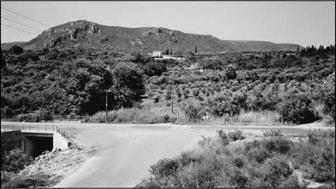Port development at Pylos
Between 1400 and 1200 BC, Achean shipping dominates long-distance commerce in the eastern Mediterranean, extending to Sicily, and perhaps even as far as to Spain. The ports of Antiquity are often developed in natural bays (that do not always provide good shelter), or in river mouths.
Recently, a detailed study of the Pylos region has made it possible to reconstitute the development of an artificial port.[150] This port was created by excavating a closed basin into marine sediments, and linking it to the sea through a channel (Figure 4.8, 4.9). The sinuous path of the channel keeps ocean swells from entering the port itself.
The port would rapidly have become unusable without additional engineering efforts, either due to silting-in of the basin itself, or by the blocking of the entrance chan-
 |
nel by wave-transported sand. A through-flow was necessary to keep the port open, as would be the case in the natural estuary of a river. Therefore a river called the Selas, naturally flowing into the Osmanaga pond to the south, was relocated so that part of its flow, very likely controlled, passed through the port on its way to the sea. An artificial lake, linked to the port by a canal dug through a rocky barrier, served as an intermediate storage and settling basin for the river flow.
 |
 |
Study of the history of sedimentation in the Osmanaga pond enables us to date this wonderful project to about 1200 BC. Such analysis also suggests that after the destruction of Pylos, in about 1200 BC, the totality of the river flow takes the direct path to the sea through the port.






Leave a reply